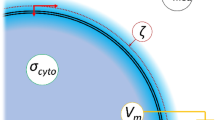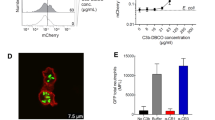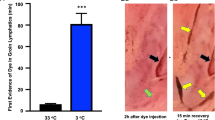Abstract
FORMATION of haemolytic plaques in gel by lymphoid cells from animals immunized with heterologous erythrocytes1,2 is inhibited by cyanide3. This has been interpreted as an indication that plaque formation results from active antibody production. There is, however, evidence to suggest that cyanide acts directly on antibody to prevent plaque formation4. Neither of these alternative explanations for the action of cyanide accounts for the following observations: cyanide added to immunized lymphoid cells on the third day of the primary response reduced the number of haemolytic plaques by more than 90 per cent, while the same procedure reduced by only 50 per cent the number of haemolytic plaques obtained on the third day of the secondary response5. These findings led to a series of experiments on the effect of several inhibitors of cell respiration on plaque formation. The results indicate that these inhibitors act directly on cells, and not on antibody, to prevent plaque formation by cells obtained during the early primary response. Many plaques not suppressible by inhibitors of respiration may be “false plaques”, that is, plaques produced by release of antibody adsorbed to small platelet or platelet-cell aggregates (unpublished work of Fitch).
This is a preview of subscription content, access via your institution
Access options
Similar content being viewed by others
References
Jerne, N. K., and Nordin, A. A., Science, 140, 405 (1963).
Ingraham, J. S., and Bussard, A., J. Exp. Med., 119, 667 (1964).
Jerne, N. K., Nordin, A. A., and Henry, C., in Cell-bound Antibodies (edit. by Amos, B., and Koprowski, H.). 109 (Wistar Institute Press, Philadelphia, 1963).
Berenbaum, M. C., Nature, 214, 590 (1967).
Rowley, D. A., and Fitch, F. W., J. Exp. Med., 120, 987 (1964).
Mazzur, S. R., Ellsworth, B., and Paucker, K., J. Immunol., 98, 683 (1967).
Cecil, R., and McPhee, J. R., Adv. Protein Chem., 14, 255 (1959).
Catsimpoolas, N., and Wood, J. L., J. Biol. Chem., 239, 4132 (1964).
Wood, J. L., and Catsimpoolas, N., J. Biol. Chem., 238, 2887 (1963).
Kleinschmidt, W. J., and Boyer, P. D., J. Immunol., 69, 247, 257 (1952).
Author information
Authors and Affiliations
Rights and permissions
About this article
Cite this article
FITCH, F., ROSEMAN, J., ROWLEY, D. et al. Cell Respiration as a Requirement for Antibody Release in vitro. Nature 218, 972–973 (1968). https://doi.org/10.1038/218972a0
Received:
Issue Date:
DOI: https://doi.org/10.1038/218972a0
Comments
By submitting a comment you agree to abide by our Terms and Community Guidelines. If you find something abusive or that does not comply with our terms or guidelines please flag it as inappropriate.



